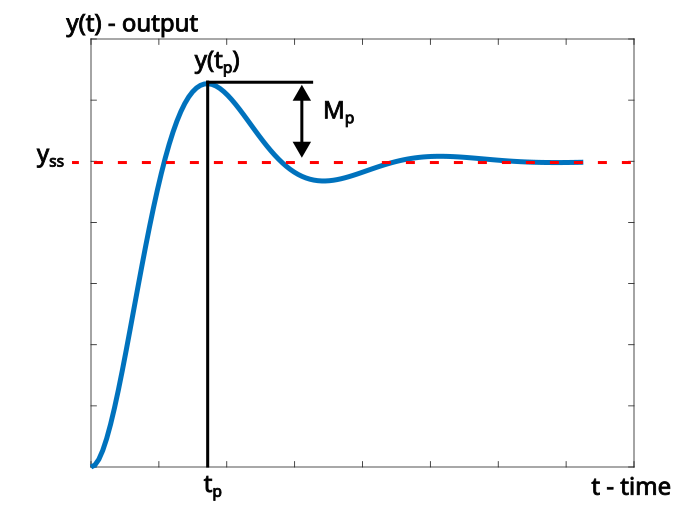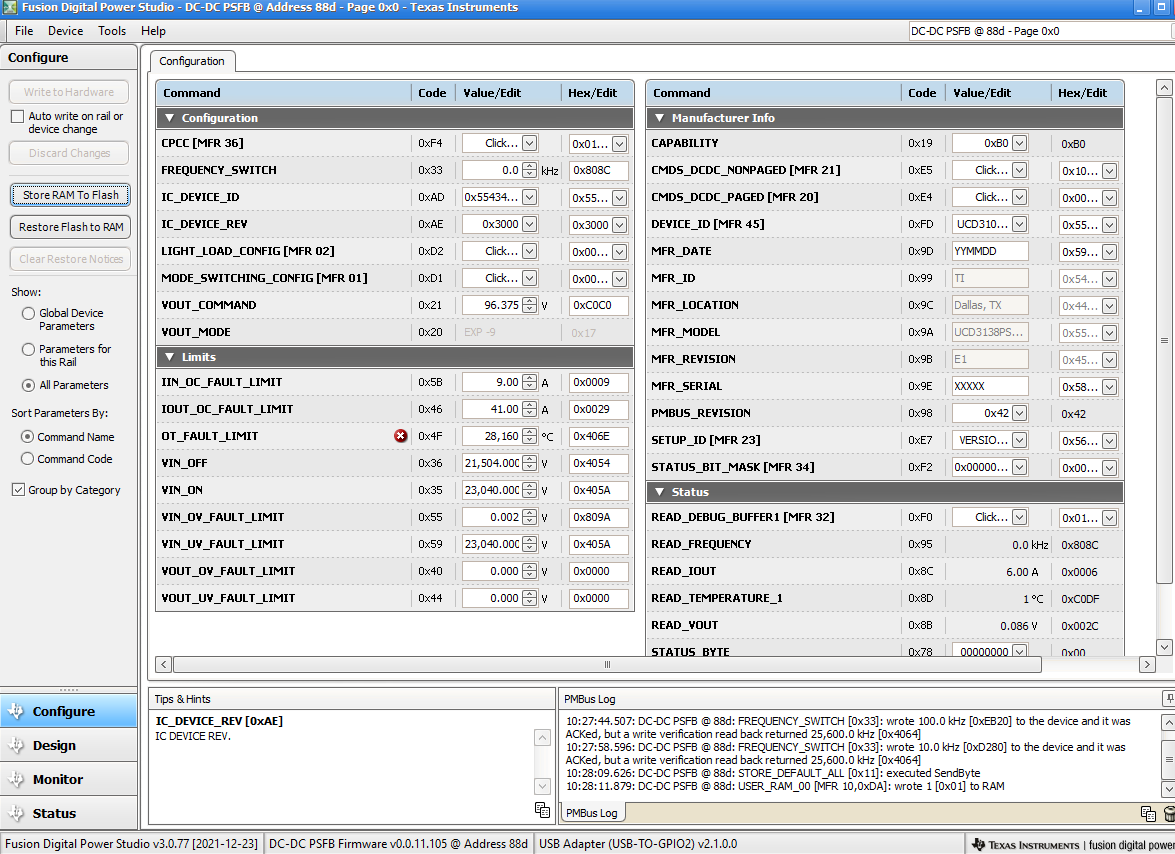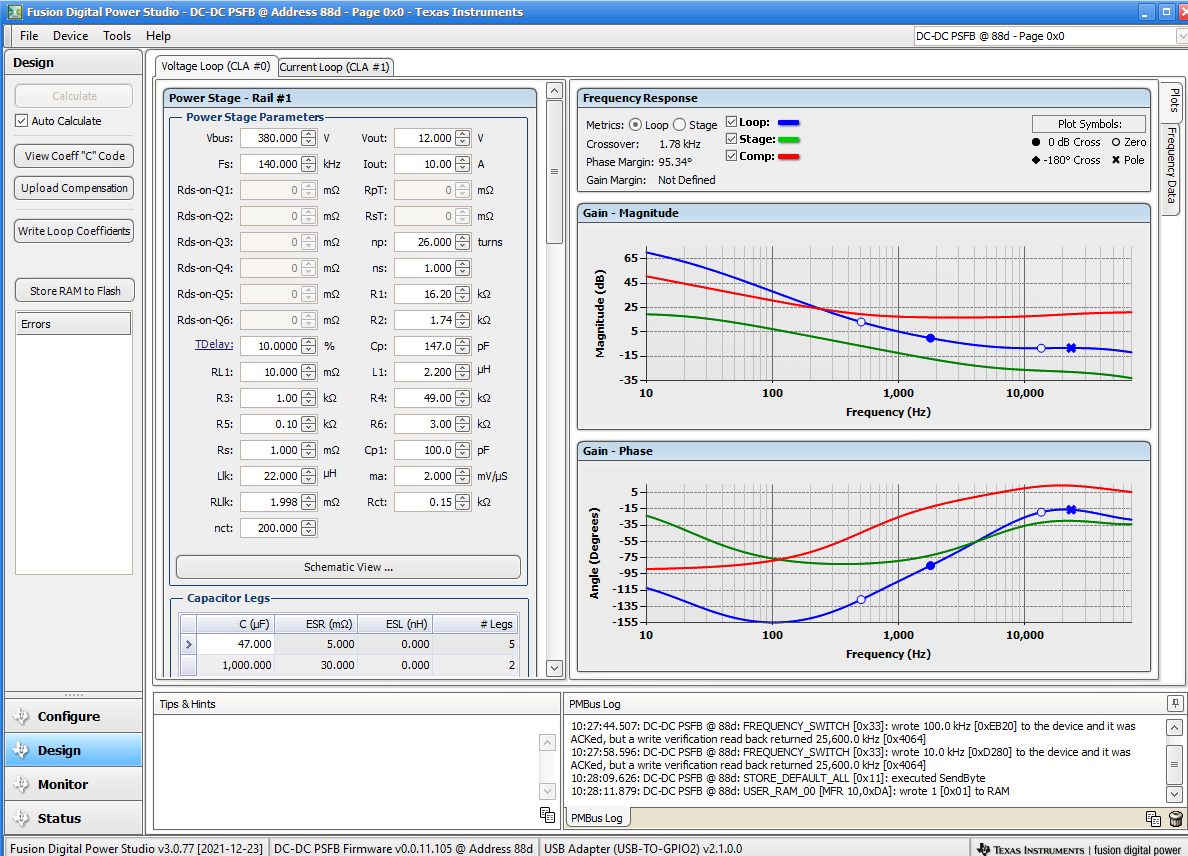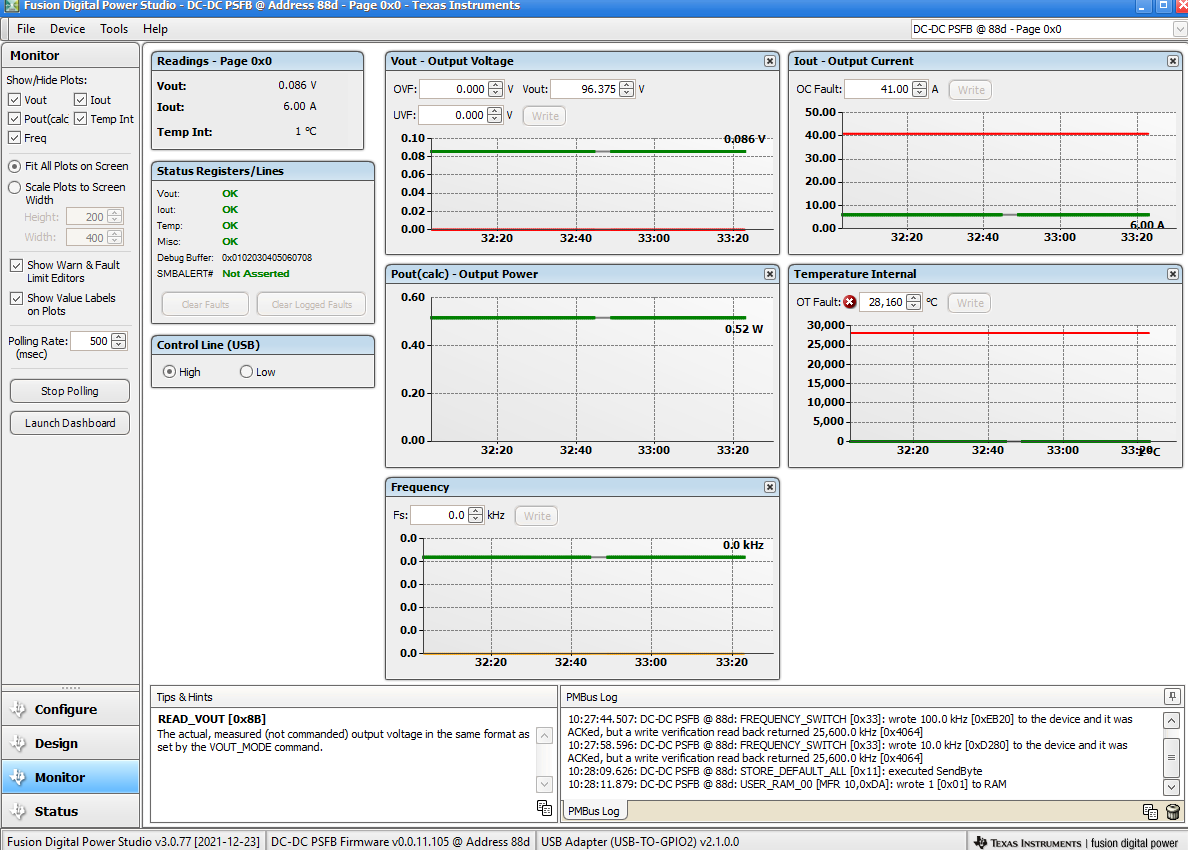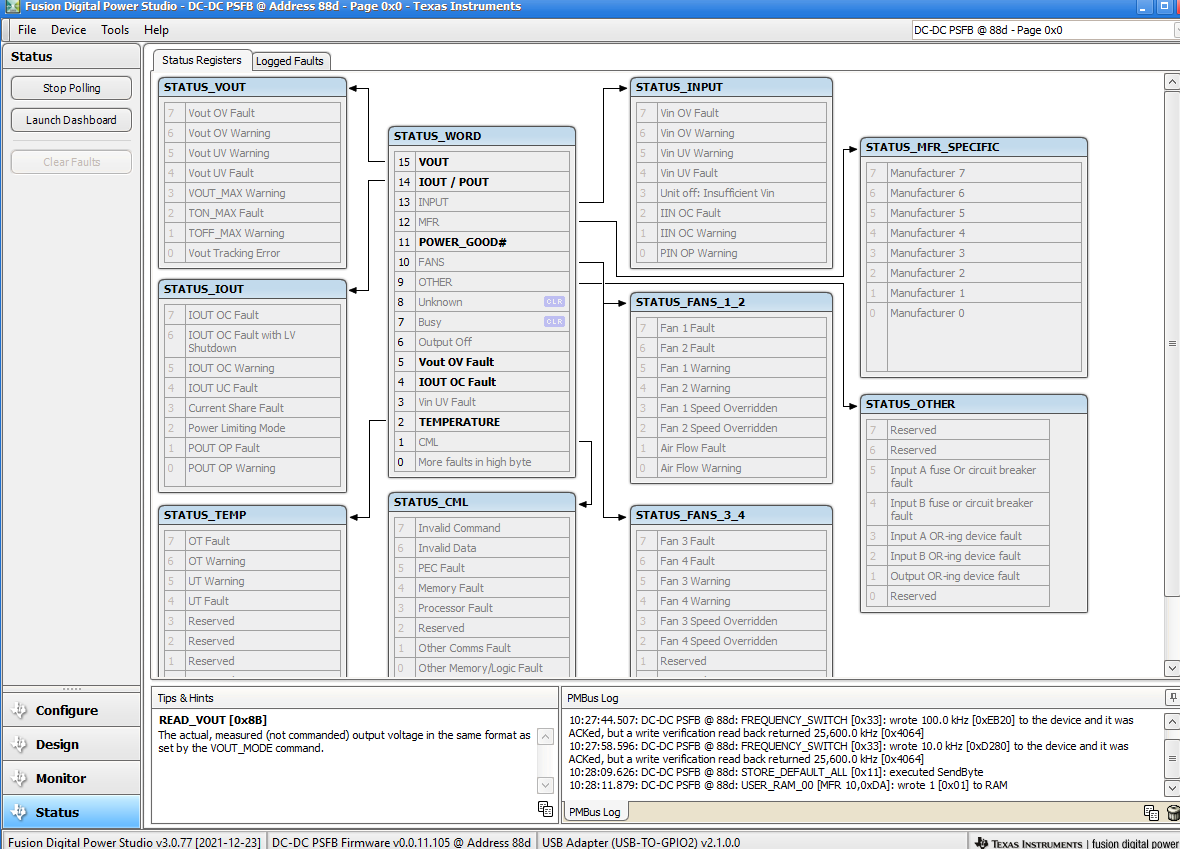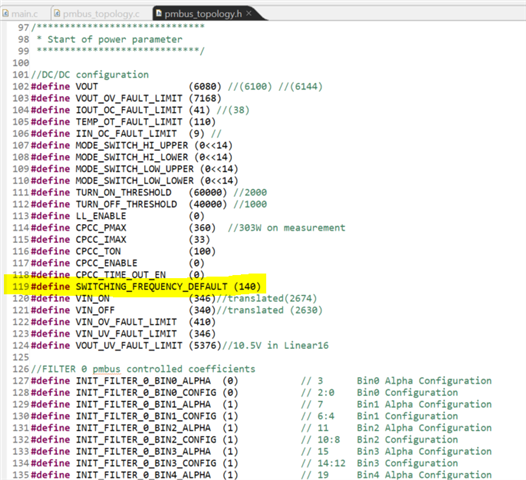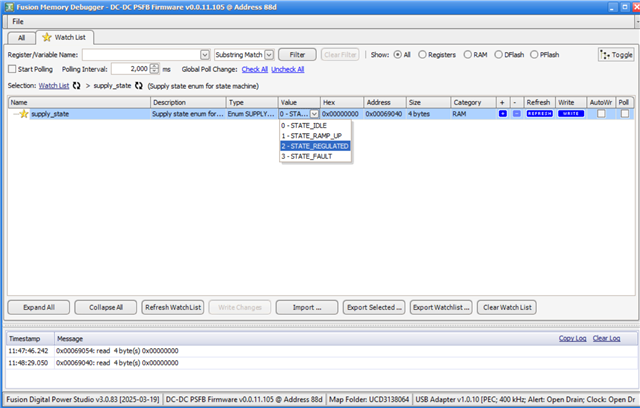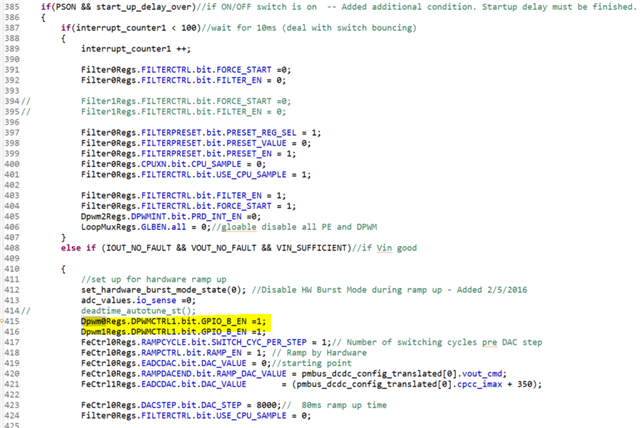Other Parts Discussed in Thread: UCD3138PSFBEVM-027, UCD3138, USB-TO-GPIO2
Tool/software:
I have the UCD3138CC64EVM-030 connected to my PC via the PMbus and 2022 USB Interface Adapter with no external supply and not connected to any power stage. Fusion Digital Power Studio (with the PSFB firmware from TI - unaltered) shows 32V Vout (even though the configure tab setting is at 96V), 6A Iout, but 0kHz frequency. The Status tab is showing Vout 0V fault, Iout 0C Fault, TEMPERATURE, POWER_GOOD#, IOUT/POUT and VOUT under STATUS_WORD. The design tab has the default values (though would this matter as there is no power stage attached?), and Fs and Vout do not match the configure tab. If I try to change the VOUT_COMMAND value it just goes to 0 though Vout never changes from 32V. I can temporarily change the FREQUENCY_SWITCH (only to 25.6kHz and nothign else) and write to hardware but this resets to 0 if the device is reset, removed or "Store RAM to flash" is pressed. What I would like to do at this moment is be able to change the desired output voltage but especially frequency, and observe the DPWM outputs via an oscilloscope. Is the reason I cannot change the frequency because it is not attached to a power stage? Or because it has no external supply? How could I test it without a power stage simply in order to view the DPWM waveforms and frequencies. Thanks.



